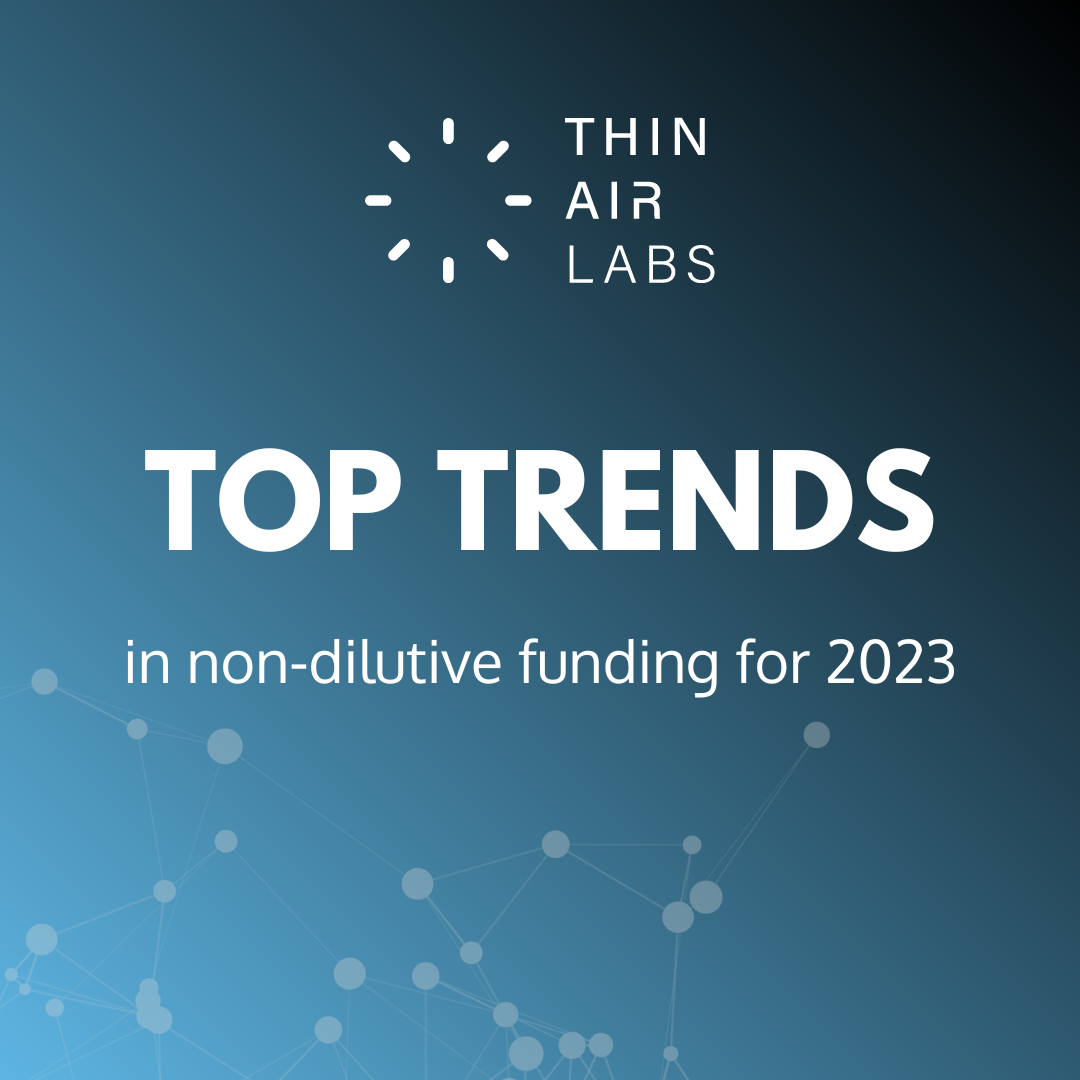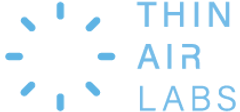With instability in the economy and the markets, there’s no better time for startups to ensure non-dilutive funding is part of their capital strategy.
As Dr. Ania Sergeenko, Funding Catalyst on the Funding Catalyst team at Thin Air Labs says, “NDF can help founders extend their runway. It can also help them attract even more funding. Founders can show potential investors that they’ve already been able to access this grant funding, which may inspire confidence in them to invest.”
So what exactly is non-dilutive funding?
“It’s basically free money,” says Ania. “It’s grant funding that founders can access that they don’t have to pay back, that doesn’t affect the ownership of their company. It can go towards specific projects or even wage subsidies.”
Much of the money founders can access comes through federal and provincial governments and is dispersed through various initiatives and programs. Based on the mandates of the government, trends tend to emerge in NDF.
“NDF can help founders extend their runway. It can also help them attract even more funding. Founders can show potential investors that they’ve already been able to access this grant funding, which may inspire confidence in them to invest.” ---Dr. Ania Sergeenko
“For example, the federal government is focused on climate change and diversity,” explains Ania. “They’re focused on what is important to invest in so the future of Canada looks competitive in a global economy and so Canadians prosper.”
That’s why one of the biggest trends in NDF for 2023 is mining. Mining, that is, and how it relates to batteries for electric vehicles. Ania says Canada is looking for minerals that can go into batteries for EVs, and they’re also looking for mining adjacent companies.
“What’s exciting about these calls for proposals for mining related projects, they’re not just looking for mining companies,” explains Ania. “They’re looking for forward thinking companies and ideas that might be mining adjacent, they could be enabling these companies to work more efficiently or they’re in safety…. things that will transform the mining industry in a way that brings it into the future. There are lots of areas in mining that can be improved with digital technologies, AI enablement, advanced extraction solutions and so on.”
The other big trend in NDF that continues for 2023 is the environment.
Ania says funding is going to companies that are not necessarily in remediation or protecting the environment. It’s a broad range of environmental solutions that will help Canada to meet its ambitious greenhouse gas emission targets. For example, Ania suggests, “Solutions to building homes that make them more green, companies that prevent waste from going into landfills, companies that will help the country hit the goal of no more gas powered vehicles by 2025. Funding is also going to companies that use data and analytics, not just for tracking and reporting to reduce greenhouse gas emissions, but to improve efficiencies through advanced monitoring, for example in the food supply chain. It’s all about diversification of our approach to reducing these emissions, to get some great ideas and see which ones stick.”
Another trend for 2023 is health tech.
“Companies are now using artificial intelligence (AI) and machine learning (ML) to look at data to help create better outcomes for patients,” says Ania. “We work with a lot of ventures that have a platform or app that has enabled AI or ML, or something that displays data to help doctors make decisions or treatment plans. These companies are often driven by doctors or dentists who see the gaps in the system, and know the technology exists to fill those gaps. They want to bring the current healthcare system into the future.”
And in Alberta there is a lot of expertise in medical device innovation. Ania says companies are working for example in “home monitoring for people with dementia, with patients in rural communities and helping them get access to better health care, or creating custom or tailored solutions for those who haven’t been the typical subject of health initiatives in the past.”
These are the top three trends Thin Air Labs’ Funding Catalyst team is seeing for 2023 in non-dilutive funding. But Ania says funding is still going toward technologies that can help with the economic recovery from COVID, particularly tech that can help with supply chain disruptions. And funding is also going toward upskilling the workforce, companies addressing the disconnect between the skills that people have, and the skill set that’s needed and trying to meet that demand.
Regardless of the trends, every startup should ensure non-dilutive funding is part of their capital strategy. Who doesn’t like free money?
.png)


